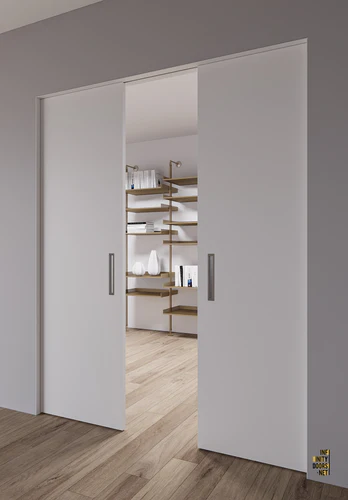Introduction
Doors are more than just functional barriers in our homes—they play a vital role in defining style, flow, and comfort. For decades, the traditional door with its visible frame and hinges has been the standard. However, modern design trends are leaning toward the minimalist appeal of the door without frame, also known as a frameless or flush door.
Both options have their advantages, but if you’re renovating or designing a new space, you may wonder: which is the better choice for modern living? Let’s dive into the differences, benefits, and considerations of each to help you decide.
What Is a Door Without Frame?
A door without frame is designed to sit seamlessly with the wall, often with concealed hinges and no visible trims. The idea is to achieve a flush, clean surface where the door almost disappears into the wall. This design has become popular in contemporary homes, offices, and luxury interiors where simplicity and minimalism are highly valued.
What Is a Traditional Door?
A traditional door is what most people are familiar with: a panel attached to a visible frame with exposed hinges and trim. These doors can swing inward or outward and often come in a wide variety of styles, from paneled wood to ornate designs. They provide structure and durability, making them a reliable choice for all types of buildings.
Aesthetic Appeal
When it comes to aesthetics, the difference is clear.
- Door Without Frame: Offers a sleek, minimalist look that blends with the wall for a modern vibe. It’s ideal for spaces where clean lines and seamless finishes are important.
- Traditional Door: Adds character through visible frames and trims, making it easier to incorporate classic or decorative details. It suits a variety of design styles, from rustic to vintage.
For homeowners seeking a minimalist, contemporary atmosphere, the frameless option often feels more in tune with modern living.
Space and Functionality
The way a door interacts with space is another important factor.
- Door Without Frame: Works best in open layouts or smaller spaces where you want the door to feel less intrusive. Since it blends into the wall, it doesn’t visually break up a room, maintaining an airy feel.
- Traditional Door: While functional and familiar, the swing radius can limit furniture placement and movement. However, its structured frame makes it more forgiving if walls are slightly uneven.
If maximizing usable space is your priority, the door without frame may be the smarter choice.
Installation Complexity
Here’s where the two differ significantly.
- Door Without Frame: Requires precision. Walls and floors must be level, and installation often demands concealed hinges and magnetic locks. Professional expertise is usually needed to achieve the flawless look.
- Traditional Door: Easier to install with standard carpentry tools and techniques. Frames can also help compensate for uneven walls, making it more DIY-friendly.
So, while frameless doors deliver elegance, traditional doors are simpler and less costly to install.
Privacy and Acoustic Performance
A door should also provide privacy and comfort.
- Door Without Frame: Though stylish, its flush design sometimes compromises sound insulation unless special seals are added. It’s more suitable for spaces where visual continuity matters more than complete privacy.
- Traditional Door: With its defined frame and thicker construction, it often provides better acoustic and thermal insulation. It’s ideal for bedrooms, offices, or areas where noise control is important.
If privacy is your main concern, a traditional door may still have the edge.
Durability and Maintenance
Durability often depends on usage and materials.
- Door Without Frame: Relies heavily on high-quality concealed hinges and hardware. If installed properly, it’s long-lasting, but repairs can be more challenging since components are hidden.
- Traditional Door: Easy to maintain and repair because hardware and frames are exposed. Replacement of parts is straightforward, making it a practical choice for everyday use.
Cost Considerations
Budget is another factor worth considering.
- Door Without Frame: Generally more expensive due to specialized hardware, installation requirements, and finishing. It’s often chosen for high-end projects where design takes priority.
- Traditional Door: Widely available and more affordable. Costs can range from budget-friendly to premium, depending on materials and design.
If you’re renovating with a strict budget, traditional doors remain the more cost-effective solution.
Which Suits Modern Living?
The answer depends on your priorities:
- If you value minimalism, seamless design, and open, airy interiors, a door without frame fits perfectly into modern living.
- If you prefer ease of installation, lower costs, and strong privacy, a traditional door remains a reliable and practical option.
Final Thoughts
Choosing between a door without frame and a traditional door isn’t about one being better than the other—it’s about what aligns with your lifestyle and design goals. Frameless doors capture the essence of modern architecture with their sleek, hidden aesthetic, while traditional doors bring reliability, privacy, and timeless charm.
In modern living, where space-saving solutions and minimalist styles are in demand, many homeowners lean toward the door without frame. Yet for those who value practicality and simplicity, the traditional door still has a well-earned place.
Whichever you choose, the right door can elevate your home’s design, improve daily functionality, and set the tone for your living space.












